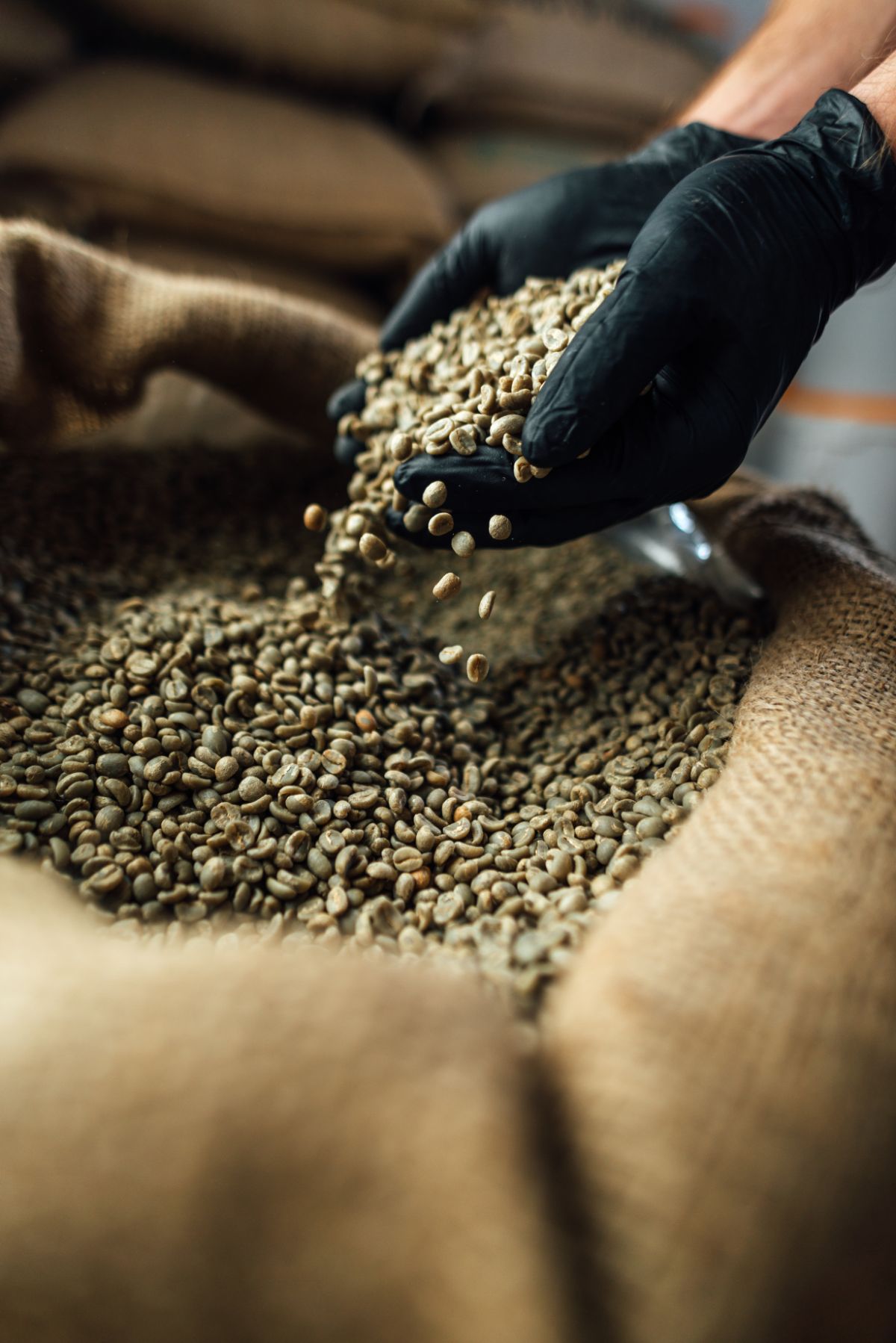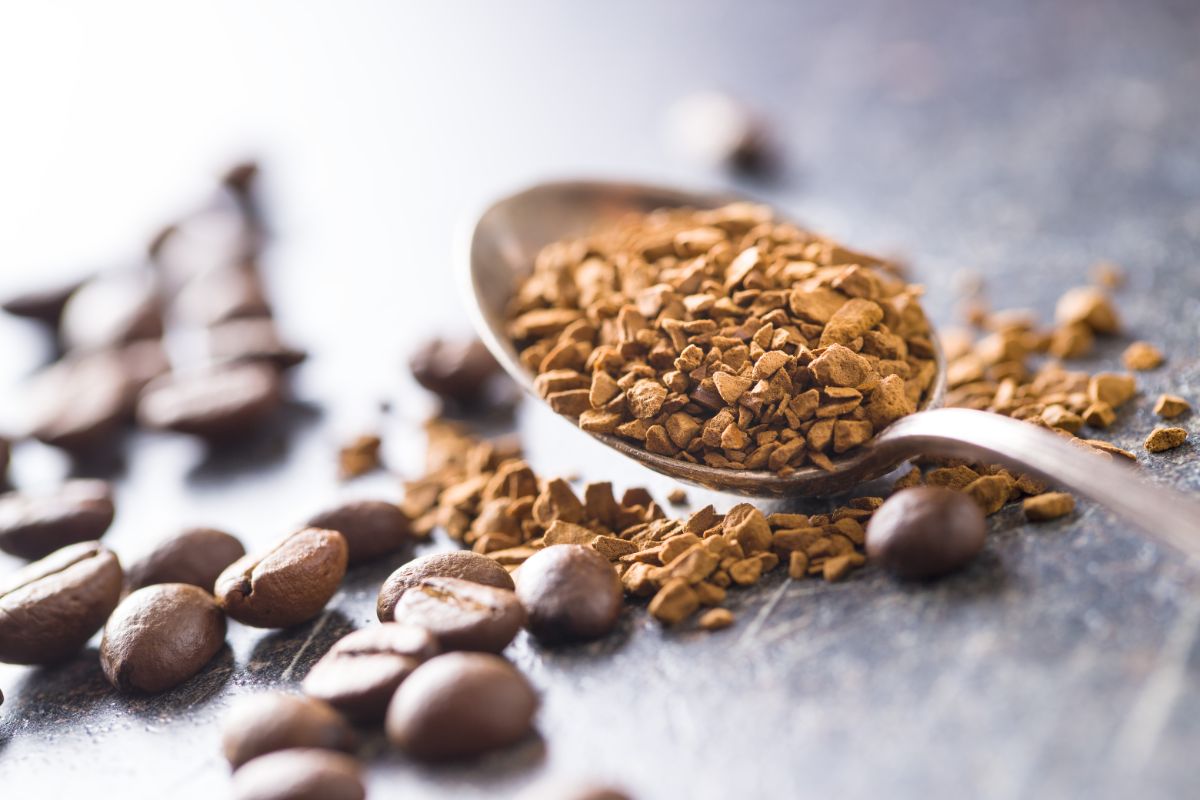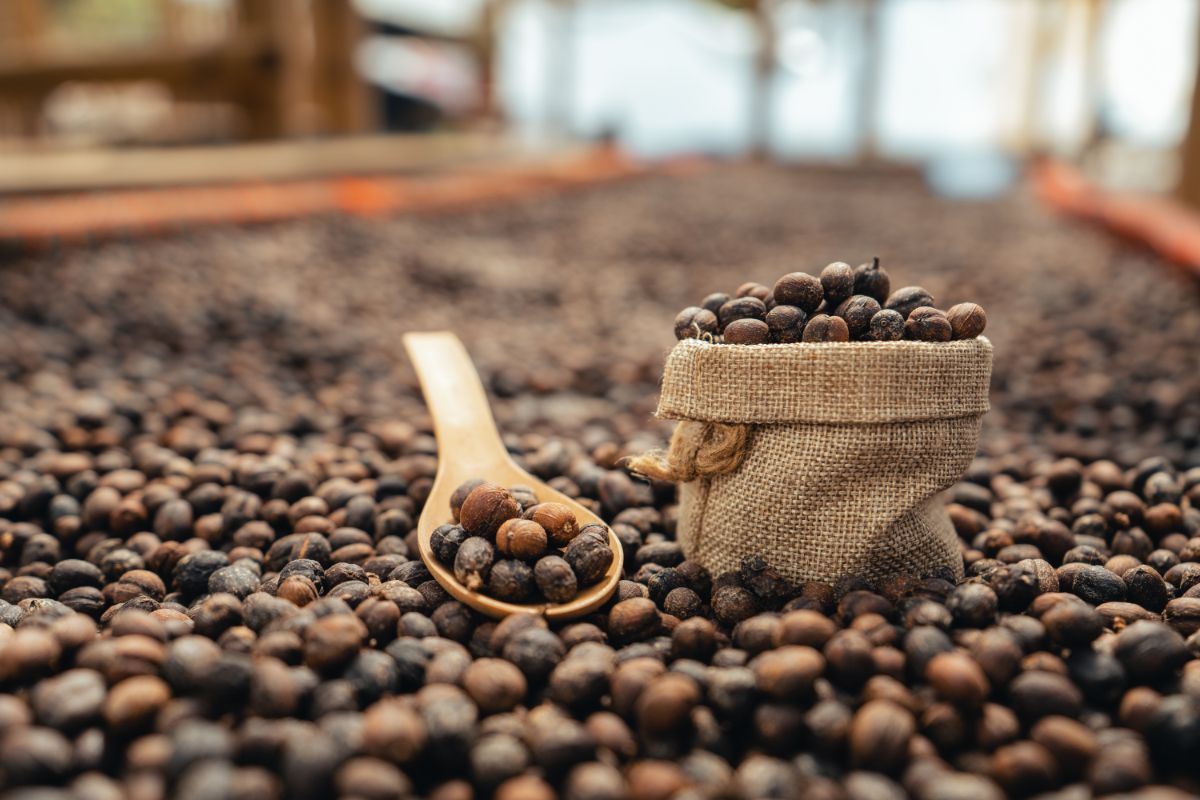What are the stages of instant coffee manufacturing?
- Green coffee beans are delivered and roasted
- An industrial mill grinder grinds the coffee beans
- Roasted coffee beans are brewed, evaporated, and siphoned off
- The resulting coffee extract is deep-frozen and then broken into granules
- The granules are set up in a low-pressure tube and sublimated
- Lost aromas are re-added to the coffee granules
- The coffee granules are packaged
Have you ever wondered how instant coffee powder is made? Many people are unaware of what goes on behind their daily morning cup of joe, but it pays to have an idea of what goes into your drink. The process behind instant coffee powder is quite interesting. Let’s take a look!
Green coffee beans are delivered and roasted

To the question of whether or not instant coffee is “real coffee,” the answer is yes. It’s made from actual coffee beans. At their rawest state, they are colored green and not its famous brown color. Kilos of these raw coffee beans are transported to factories to be roasted.
At this point, coffee blends are introduced if different beans are put into a giant roaster. There are three different categories of how roasted these coffee beans can become — light, medium, and dark roast. These dictate how much flavor of the original bean is retained. The light retains most of its original flavor and caffeine levels.
An industrial mill grinder grinds the coffee beans.
Once roasted to their desired category, they are brought to an industrial mill grinder. This machine can grind up to about 1,500 kg of coffee beans every hour.
Unfortunately, during the grinding process, a lot of the coffee’s natural aroma is lost. However, many factories try to curb this by pumping nitrogen gas. This is used to collect and capture the aroma inside a tank. Later on, the vapor will be added back into the coffee powder.
Roasted coffee beans are brewed, evaporated, and siphoned off
The grounded coffee beans are now ready to be brewed. This is the expanded version of brewing coffee with a French press at home — except with about 700 kilograms of coffee in a giant pod, making about 250,000 cups of coffee.
Afterward, the brew is sent to an industrial evaporation tank. This is composed of pipes that the coffee mixture passes through. As it does, it is heated until the water from the mixture evaporates and is siphoned off. This makes the coffee twice as thick and syrupy as its original brew, much like a coffee extract that intensifies in flavor.
The resulting coffee extract is deep-frozen and then broken into granules.

For the coffee extract to be made into granules, it must be frozen first. Before sending it off for deep freezing, it is first pre-chilled through heat exchanges. Once ready, it goes onto a conveyor belt that leads to the factory’s giant freezer. It has extremely low temperatures between -40°C and -50°C
Once frozen, it’s then broken up into granules, which still contain tiny bits of water.
The granules are set up in a low-pressure tube and sublimated.
Since the granules still contain water, which needs to be removed completely, they’re driven through a low-pressure tube for several hours in a process called sublimation. This is when a solid is immediately converted into a gas without passing through a liquidation stage. Sublimation occurs by heating the granules to 60°C in a strong vacuum, vaporizing the frozen water, and turning it directly into steam.
Lost aromas are re-added to the coffee granules.
Once the coffee granules exit the vacuum, they will now remain in a solid state when stored at room temperature. The granules are collected, and the lost aromas that were collected via nitrogen gas earlier are now re-added. This is done by spraying them over the granules as they are put into giant sacks.
The coffee granules are packaged.
And speaking of giant sacks, the packaging is the final stage in the process—from bean to bag indeed. Coffee granules are packed into jars, sachets, or bottles, ready to be shipped all over the world.
Key Takeaway
And that’s how instant coffee powder is made! However, throughout the process, various other ingredients can be added to the coffee beans, brew, extract, or powder that either add to or lessen its effects.
If you’re looking for coffee that’s healthy, with all the best health benefits and none of the nasty side effects like palpitations and stomach problems, try our Bonavita 8-in-1 Coffee today. It gives you that healthy energy boost you need to start your day. This is all thanks to its natural ingredients like mangosteen, guyabano, and acai berry. Fortified with various nutrients to boost your body’s immune system, mood, and overall health, it’s the best instant coffee in the Philippines today. Get your fix now!



